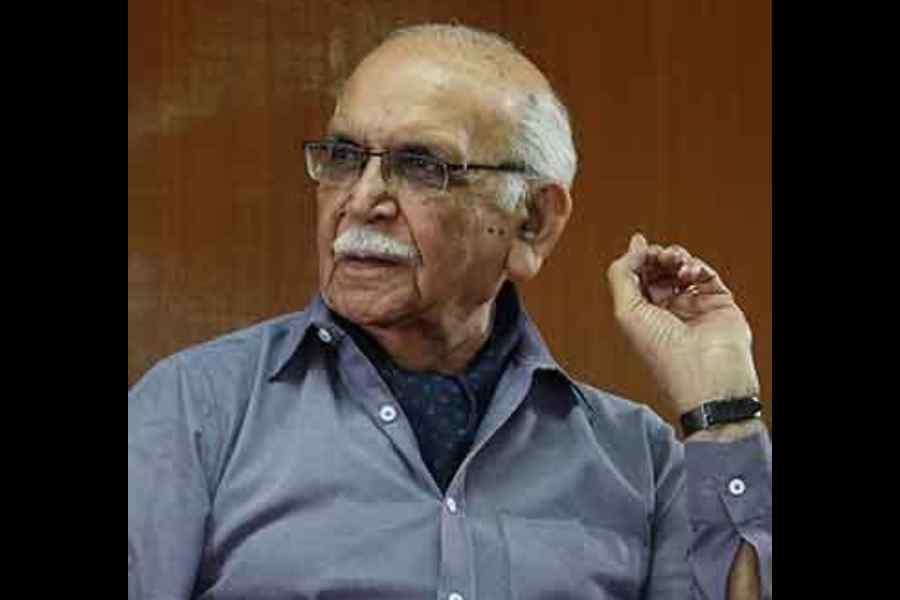In B.N. Goswamy we had probably the only Indian art historian who wrote books with equal seriousness and dedication to both the academic and the uninitiated reader, trying to make the knowledge of Indian art accessible to the people.
Any reader of his book, The Spirit of Indian Painting: Close Encounters with 101 Great Works 1100 – 1900, would be astonished by the remarkable simplicity with which he discusses the old artworks, connecting the artistic style and subject matter with the complex historical context of their production and reception. In elucidating the histories of Indian art, he taught us a new way of looking at them. He was not an antiquarian who was interested in the antiquities but an art historian trying to find a generative connection between the past and the present, the object of the past and its relevance to contemporary aesthetic, cultural and political discourses. In this, he was the true legatee of scholar and Indologist Ananda Coomaraswamy, whom he deeply admired.
Goswamy, inarguably our leading art historian, wrote more than 20 books on pre-modern Indian art and aesthetics, including An Early Document of Indian Art: The Chitralaksana of Nagnajit (1976), Pahari Masters: Court Painters of Northern India (1992), Nainsukh of Guler: A Great Indian Painter from a Small Hill State (1997) and The Spirit of Indian Painting: Close Encounters with 101 Great Works, 1100 – 1900 (2014).
A seasoned connoisseur and prolific writer, he wrote extensively, focusing on the relationship among the artist, style and the historical context in which he worked, emphasising the integrity of artistic production. He was interested in the courtly miniature traditions of north India, particularly the Pahari paintings. His magisterial works on the life and work of two great painters of the small hill state of Guler, Nainsukh and Manaku, show his profound erudition, methodological precision and intense research that features a new perspective on the study of pre-modern art dominated by the state of anonymity, placing the individual artist and his creative genius amidst the shared language of traditional art.
Goswamy was born in 1933 in Sargodha (now Pakistan) to a sessions judge father. The family migrated to Amritsar, Punjab, where he completed his intermediate studies at the Hindu College. After securing his master’s from Punjab University, Chandigarh, in 1954 and spending two years in the Indian Administrative Service, Goswamy resigned to study art. In 1961, he obtained a PhD from Punjab University for his doctoral dissertation on Kangra painting under the renowned historian, Hari Ram Gupta.
While doing his research, Goswamy joined Punjab University as an art history faculty member and spent his entire teaching life at the institution, becoming a professor and, later, emeritus professor. He also taught as a visiting professor at many universities worldwide, including Heidelberg, Berkeley and Zurich. Besides being a scholar and writer, he was a great conversationist and noted pedagogue; many have admired him for being an insightful and passionate teacher. Besides his academic career, Goswamy developed the Museum of Fine Arts at Punjab University, known for its extensive collection of contemporary art, as its director.
Alongside his own books, he edited, often in collaboration with other internationally renowned scholars, several significant publications on Indian art and aesthetics, notably the Oxford Readings in Indian Art (2018), which have greatly facilitated the critical study of pre-modern Indian art. Through his diverse work, he continued the rich legacy of great Indian scholars and Indologists, such as Ananda Coomaraswamy, Stella Kramrisch, Karl Khandalavala and, to a small extent, C. Sivaramamurti. While continuing their legacy, he made a unique contribution to the field, making the study of Indian art relevant to today’s art historical discourses.
For his groundbreaking contribution to the study of Indian art and culture, he received many honours, including the Padma Shri and the Padma Bhushan. Indeed, his major scholarly works are based on intensive research, close textual reading and intricate analysis. However, his writing is not academic, but lucid and evocative. Despite being loaded with information, it captivates us, bringing us to the core of the content.
Arkaprava Bose is an art historian and archivist at Emami Art, Calcutta










